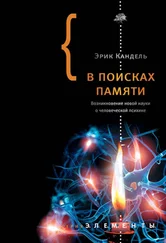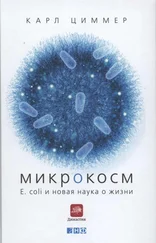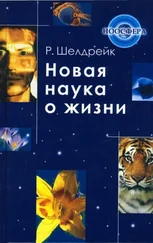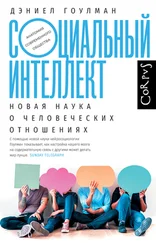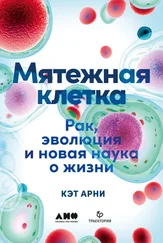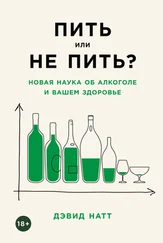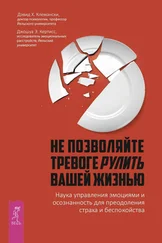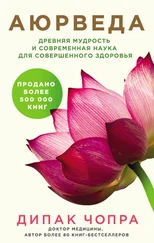34 I. Mathieson et al. “Genome-Wide Patterns of Selection in 230 Ancient Eurasians”, Nature 528 (2015): 499–503.
35 I. Mathieson et al. “The Genomic History of Southeastern Europe”, bioRxiv (2017): doi.org/10.1101/135616.
36 Haak et al. “Massive Migration”; M. E. Allentoft et al. “Population Genomics of Bronze Age Eurasia”, Nature 522 (2015): 167–172.
37 Templeton. “Biological Races”.
Глава 5. Как сложилась современная Европа
1 B. Bramanti et al. “Genetic Discontinuity Between Local Hunter-Gatherers and Central Europe’s First Farmers”, Science 326 (2009): 137–40.
2 A. Keller et al. “New Insights into the Tyrolean Iceman’s Origin and Phenotype as Inferred by Whole-Genome Sequencing”, Nature Communications 3 (2012): 698.
3 W. Muller et al. “Origin and Migration of the Alpine Iceman”, Science 302 (2003): 862–866.
4 P. Skoglund et al. “Origins and Genetic Legacy of Neolithic Farmers and Hunter-Gatherers in Europe”, Science 336 (2012): 466–469.
5 Albert J. Ammerman, L. L. Cavalli-Sforza. The Neolithic Transition and the Genetics of Populations in Europe (Princeton, NJ: Princeton University Press, 1984).
6 N. J. Patterson et al. “Ancient Admixture in Human History”, Genetics 192 (2012): 1065–1093.
7 M. Raghavan et al. “Upper Palaeolithic Siberian Genome Reveals Dual Ancestry of Native Americans”, Nature (2013): doi: 10.1038/nature12736.
8 I. Lazaridis et al. “Ancient Human Genomes Suggest Three Ancestral Populations for Present-Day Europeans”, Nature 513 (2014): 409–413.
9 C. Gamba et al. “Genome Flux and Stasis in a Five Millennium Transect of European Prehistory”, Nature Communications 5 (2014): 5257; M. E. Allentoft et al. “Population Genomics of Bronze Age Eurasia”, Nature 522 (2015): 167–172; W. Haak et al. “Massive Migration from the Steppe Was a Source for Indo-European Languages in Europe”, Nature 522 (2015): 207–211; I. Mathieson et al. “Genome-Wide Patterns of Selection in 230 Ancient Eurasians”, Nature 528 (2015): 499–503.
10 L. L. Cavalli-Sforza, Paolo Menozzi, Alberto Piazza. The History and Geography of Human Genes (Princeton, NJ: Princeton University Press, 1994).
11 Haak et al. “Massive Migration”; Mathieson et al. “Genome-Wide Patterns”.
12 Q. Fu et al. “The Genetic History of Ice Age Europe”, Nature 534 (2016): 200–205.
13 I. Mathieson. “The Genomic History of Southeastern Europe”, bioRxiv (2017): doi.org/10.1101/135616.
14 K. Douka et al. “Dating Knossos and the Arrival of the Earliest Neolithic in the Southern Aegean”, Antiquity 91 (2017): 304–321.
15 Haak et al. “Massive Migration”; M. Lipson et al. “Parallel Palaeogenomic Transects Reveal Complex Genetic History of Early European Farmers”, Nature 551 (2017): 368–372.
16 Colin Renfrew. Before Civilization: The Radiocarbon Revolution and Prehistoric Europe (London: Jonathan Cape, 1973).
17 M. Gimbutas. The Prehistory of Eastern Europe, Part I: Mesolithic, Neolithic and Copper Age Cultures in Russia and the Baltic Area (American School of Prehistoric Research, Harvard University, Bulletin № 20) (Cambridge, MA: Peabody Museum, 1956).
18 David W. Anthony. The Horse, the Wheel, and Language: How Bronze-Age Riders from the Eurasian Steppes Shaped the Modern World (Princeton, NJ: Princeton University Press, 2007).
19 Там же.
20 Там же.
21 Haak et al. “Massive Migration”.
22 Там же; I. Lazaridis et al. “Genomic Insights into the Origin of Farming in the Ancient Near East”, Nature 536 (2016): 419–424.
23 M. Ivanova. “Kaukasus Und Orient: Die Entstehung des ‘MaikopPhänomens’ im 4. Jahrtausend v. Chr”, Praehistorische Zeitschrift 87 (2012): 1–28.
24 Haak et al. “Massive Migration”; Allentoft et al. “Bronze Age Eurasia”.
25 Там же.
26 G. Kossinna. “Die Deutsche Ostmark: Ein Heimatboden der Germanen”, Berlin (1919).
27 B. Arnold. “The Past as Propaganda: Totalitarian Archaeology in Nazi Germany”, Antiquity 64 (1990): 464–478.
28 H. Härke. “The Debate on Migration and Identity in Europe”, Antiquity 78 (2004): 453–456.
29 V. Heyd. “Kossinna’s Smile”, Antiquity 91 (2017): 348–359; M. Van der Linden. “Population History in Third-Millennium BC Europe: Assessing the Contribution of Genetics”, World Archaeology 48 (2016): 714–728; N. N. Johannsen, G. Larson, D. J. Meltzer, M. Van der Linden. “A Composite Window into Human History”, Science 356 (2017): 1118–1120.
30 Vere Gordon Childe. The Aryans: A Study of Indo-European Origins (London and New York: K. Paul, Trench, Trubner and Co. and Alfred A. Knopf, 1926).
31 Härke. “Debate on Migration and Identity”.
32 P. Bellwood. First Migrants: Ancient Migration in Global Perspective (Chichester, West Sussex, UK / Malden, MA: Wiley-Blackwell, 2013).
33 C. McEvedy, R. Jones. Atlas of World Population History (Harmonds-worth, Middlesex, UK: Penguin, 1978).
34 K. Kristiansen. “The Bronze Age Expansion of Indo-European Languages: An Archaeological Model” in: Becoming European: The Transformation of Third Millennium Northern and Western Europe , ed. Christopher Prescott and Håkon Glørstad (Oxford: Oxbow Books, 2011), 165–181.
35 S. Rasmussen et al. “Early Divergent Strains of Yersinia pestis in Eurasia 5,000 Years Ago”, Cell 163 (2015): 571–582.
36 A. P. Fitzpatrick. The Amesbury Archer and the Boscombe Bowmen: Bell Beaker Burials at Boscombe Down, Amesbury, Wiltshire (Salisbury, UK: Wessex Archaeology Reports, 2011).
37 I. Olalde et al. “The Beaker Phenomenon and the Genomic Transformation of Northwest Europe”, bioRxiv (2017): doi. org/10.1101/135962.
38 L. M. Cassidy et al. “Neolithic and Bronze Age Migration to Ireland and Establishment of the Insular Atlantic Genome”, Proceedings of the National Academy of Sciences of the U.S.A. 113 (2016): 368–373.
39 C. Renfrew. Archaeology and Language: The Puzzle of Indo-European Origins (Cambridge: Cambridge University Press, 1997).
40 Там же.
41 P. Bellwood. “Human Migrations and the Histories of Major Language Families” in The Global Prehistory of Human Migration (Chichester, UK, and Malden, MA: Wiley-Blackwell, 2013), 87–95.
42 С. Renfrew. Archaeology and Language ; P. Bellwood, First Farmers: The Origins of Agricultural Societies (Malden, MA: Blackwell, 2005).
43 Haak et al. “Massive Migration”; Allentoft et al. “Bronze Age Eurasia”.
44 D. W. Anthony, D. Ringe. “The Indo-European Homeland from Linguistic and Archaeological Perspectives”, Annual Review of Linguistics 1 (2015): 199–219.
45 L. Poliakov. The Aryan Myth: A History of Racist and Nationalist Ideas in Europe (New York: Basic Books, 1974).
Глава 6. Столкновение, сотворившее Индию
1 The Rigveda, trans. Stephanie W. Jamison and Joel P. Brereton (Oxford: Oxford University Press, 2014), hymns 1.33, 1.53, 2.12, 3.30, 3.34, 4.16, 4.28.
2 M. Witzel. “Early Indian History: Linguistic and Textual Parameters”, in The Indo-Aryans of Ancient South Asia: Language, Material Culture and Ethnicity, ed. George Erdosy (Berlin: Walter de Gruyter, 1995), 85–125.
3 Rita P. Wright. The Ancient Indus: Urbanism, Economy, and Society (Cambridge: Cambridge University Press, 2010); Gregory L. Possehl. The Indus Civilization: A Contemporary Perspective (Lanham, MD: AltaMira Press, 2002).
Читать дальше
Конец ознакомительного отрывка
Купить книгу
![Дэвид Райх Кто мы и как сюда попали [Древняя ДНК и новая наука о человеческом прошлом] обложка книги](/books/396012/devid-rajh-kto-my-i-kak-syuda-popali-drevnyaya-dnk-i-cover.webp)
